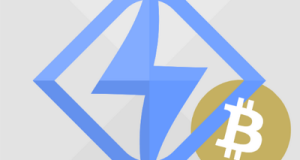Recently, I decided to buy some XRP as a way to learn more about the Ripple network and how it functions. Of course, the first question was, “what is the easiest way to purchase some XRP?” It turns out that it was a lot easier and faster than I imagined it would be.
I made use of SnapSwap.us
The method I chose was SnapSwap.us, which is the first United States based USD/XRP gateway. One of the reasons I chose them was because they offered a 500 XRP bonus for the first deposit. I could deposit $10 and get roughly $17 worth of XRP. Not a bad deal if you ask me!
Instead, I chose to deposit $100, and for each additional $1, I received 3 XRP — up to 300 XRP per transaction, and 2000 XRP total towards one account. Since then, I have made multiple deposits over $100, including one for $1000 – each time getting 300 XRP as a bonus.
It was fairly fast, and painless. I had the funds transferred to my Ripple wallet within 24 hours of depositing cash into the SnapSwap bank account. I never had to email or contact their customer support – not once. It just seems to work as intended.
They are now requiring the same identification protections and anti-money laundering prevention mechanisms that are required of legitimate FIAT/BTC exchanges such as Coinbase, Bitstamp, and others. In fact, U.K. based Bitstamp partnered with Ripple to be the first major XRP/BTC gateway, which can also facilitate FIAT currency as well. You can find a list of Ripple gateways here.
Why Ripple?
More than anything else, I’m confident about Ripple because of the team that is forming behind it. After watching a discussion on YouTube with Ripple’s lead cryptographer David Shwartz about Bitcoin transaction malleability, I was impressed with his intelligence and his ability to articulate himself. David was involved in working on the Bitcoin protocol and that is how Ripple founder Chris Larsen got in contact with David.
In addition to David, there are a lot of very talented people that are involved in Ripple — either working for the company, or developing their own Ripple-based start-ups. CrossCoin Ventures recently partnered with Ripple to develop an accelerator, which will help Ripple-based start-ups get funding, technical assistance and legal counselling.
The SnapSwap founder Denis Kiselev himself is leading the way new companies around the Ripple network. He’s previously had time working at the World Bank, and then went on to create one of Russia’s largest insurance companies. In a blog post on the Ripple site he says, “I built it up from zero to being one of the top 5 insurance companies in the country.”
There are too many great people who are worthy of naming, but the last one I’ll list here is Karen Gifford. She has an impressive background working for almost 8 years at the New York Federal Reserve’s litigation and enforcement group — and is spearheading their regulatory compliance by working with US government officials and private banks.
Every day it seems that the Ripple team is getting stronger and stronger, and I am more optimistic about the future of this company, the protocol they created, and the network they are building.
It’s a bridge, not just a coin
I do not see Ripple or XRP as a direct competitor to Bitcoin or Litecoin, but I see it as a means to incorporating Bitcoin-based cryptocurrencies into the mainstream world of FIAT that we live in. Like it or not, FIAT currencies are going to be around for a long-time… maybe forever — and as much as the Libertarian in me wants to wish them away, the reality is that governments around the globe need FIAT currencies. It’s how they finance their own operations and maintain control over their economies.
Ripple offers the ability to trade regular FIAT currencies in a transparent and extremely efficient method using the Ripple network. Ripple essentially makes the playing field even for all currencies and investors. There is no advantage to using U.S. Dollars over Bitcoin, or Litecoin, and vice-versa on the Ripple network, because the nearly instant transaction times (5 seconds or less) apply to every currency/asset/fund traded.
It might take decades or centuries before FIAT currencies (and their associated governments) begin to melt away for more decentralized monetary systems such as cryptocurrencies. I see Ripple as a means to connecting cryptocurrencies to FIAT, as well as liberating the economy of bloated and unnecessarily archaic payment processing networks.
Personally, I would not pick one technology over another, but I would look at the advantages of each particular technology in fulfilling a niche in the marketplace. Ripple Labs seeks to revolutionize the banking and financial sector from within, whereas Bitcoin seeks to provide a means for moving money outside of the banking and financial sector. The way I see it, the sooner Bitcoiners become involved in the Ripple network, the sooner they will bring Bitcoin into the mainstream financial sector.
If you are interested in learning more about Ripple, I recommend you read the FAQ and Guides at xrptalk.org.
Comments or questions? Leave them below.
 CoinJoint.info Covering Bitcoin, Altcoins, Cryptocurrencies, and more…
CoinJoint.info Covering Bitcoin, Altcoins, Cryptocurrencies, and more…


